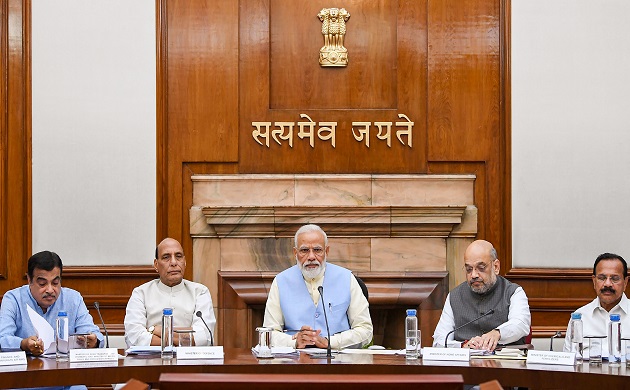The political parties in India have been known for making unrealistic promises. Congress had promised complete eradication of poverty (Garibi Hatao) almost five decades back and could not deliver the same till it was ousted from the government in May 2014. The regional parties too are not behind in making unrealistic and lofty promises. In 2019 general election manifesto, TDP promised 2 lakh rupees per year direct cash transfer to every poor family, an amount almost three times to what was promised by Congress under NYAY scheme. However, BJP has been a party with a difference in this respect.
People first, people always.
Glad that path-breaking decisions were taken in the Cabinet, the first in this tenure. Hardworking farmers and industrious traders will benefit greatly due to these decisions.
The decisions will enhance dignity and empowerment of several Indians. pic.twitter.com/U9JTXeyoVm
— Narendra Modi (@narendramodi) May 31, 2019
The party delivered on the promise to farmers and traders. “People first, people always. Glad that path-breaking decisions were taken in the Cabinet, the first in this tenure. Hardworking farmers and industrious traders will benefit greatly due to these decisions. The decisions will enhance dignity and empowerment of several Indians,” tweeted PM Modi.
In the 2019 general election manifesto, the party promised to remove the 2-acre land holding cap for the PM KISAN beneficiaries to all the farming families irrespective of land holdings. Earlier the amount allotted for the scheme was 75,000 crore rupees, the Modi government increased the amount by 12,000 crore rupees to 87,000 crore rupees. The total number of estimated beneficiaries was around 12.5 crore and now an additional 2 crore farmers are expected to benefit from the scheme.
The Modi government also approved Pradhan Mantri Kisan Pension Yojana under which farmers would get 3,000 rupees per month when they attain the age of 60 years. “In the initial phase, the government will cover minimum 5 crore small and marginal farmers in the first three years,” said Agriculture Minister Narendra Singh Tomar. The scheme would cost around 10,000 crore rupees to the central exchequer. The scheme is voluntary and farmers between the age of 18 to 40 are eligible for it.
Another pension scheme is for traders with almost the same specifications. All the traders, small shopkeepers and those registered under GST network with up to 1.5 crore rupees annual turnover are also eligible for the scheme. The people could voluntarily enroll in the 3, 25,000 common service centers spread across the country. The Modi government will make a matching contribution to that of subscribers.
The previous governments misunderstood the cause of farmer’s problems and rural distress. Consider this, the country faced droughts in 2014 and 2015 which hurt the farmer’s income, but in 2015, 2016, 2018 – the country had record produce. However, the record produce resulted in a ‘crash in price’ given the fact that the country is sitting on huge stockpile of food. The produce is growing at the pace of 3 percent while the population growth is at 1 percent. Therefore, the best solution to the farming problem is pulling more people out of farming and rural areas and PM-KISAN would effectively do that.
The aim of rural welfare schemes is to increase the spending power of rural households, pull people out of poverty which is more prevalent in rural areas, and end woes of farmers. PM-KISAN outsmarts both farm loan waiver and MGNREGA it all these aims. It is a well-known fact that a very small number of small and marginal farmers have access to institutional credit. The farm loan waiver credits the credit culture while it benefits only a small percentage of farmers with large landholdings. The farm loan waivers are also ‘regressive’ in nature given the fact that loan amount is often proportional to land therefore large farmers benefit more than small farmers.
